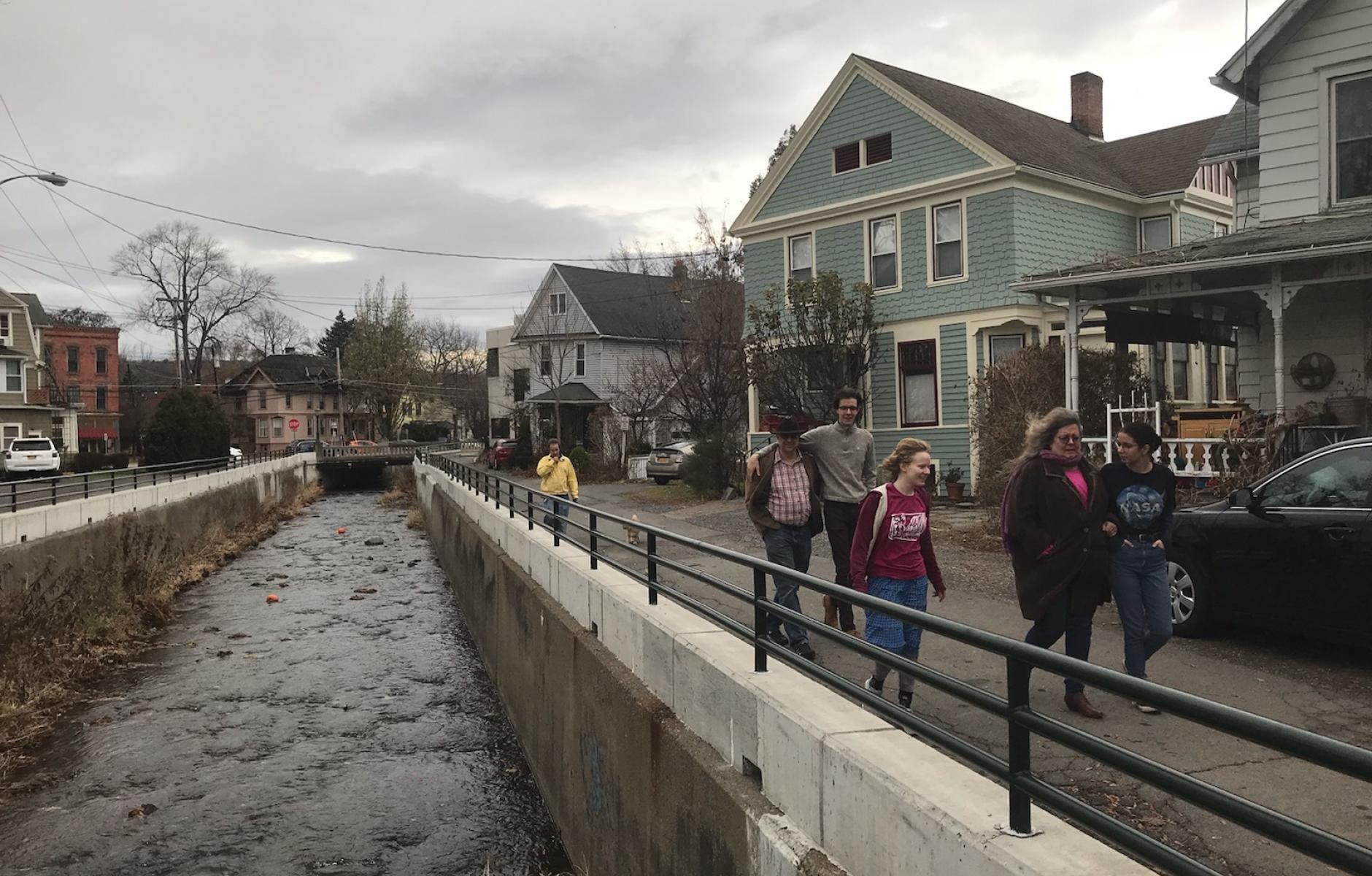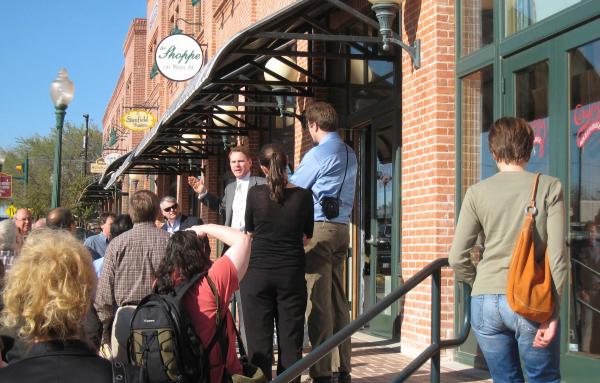
Thanksgiving and the magic of community
To me, Thanksgiving smells of cool gray skies, bare trees, decaying leaves, and an old town in Connecticut. That’s where we spent many Thanksgivings when I was a child—at the 19th Century house of an aunt and uncle.
We always went for a walk—several walks—the older and younger ones together with history around us. We talked, revisited family stories, and absorbed the town by osmosis. In a world where people tend to drive on busy highways, walks can be inspirational. They tend to restore a collective memory, and that is a foundation of urbanism.
Architect Steve Mouzon tells the story of a 1980 walk in a small town of Alabama with his wife, Wanda, and sister, that changed their lives. Mouzon, author of The Original Green, has spent a career in the New Urbanism and his sister, urban designer Susan Henderson, is an accomplished urbanist and a board member of CNU. The house where the family gathered was located in a typical suburb. They needed a place to burn off the mashed potatoes and turkey—so they went to the historic town called Mooresville for the afternoon.
An architectural student at the time, Mouzon realized that a town built without architects can be better than anything that had been designed in recent decades using the latest technology and architectural theories. All three have since dedicated much of their working lives to seek ways to re-create the magic that they experienced the day after Thanksgiving nearly 40 years ago.
Another Thanksgiving, in 1995, changed my life. My story takes place in a town in Pennsylvania called Mechanicsburg where my sister lived. I had been noticing something similar to Mouzon for a decade or so. I was a journalist in the trade publishing field, and I tried to convince my boss to start a publication on the very new trend of New Urbanism. That conversation went nowhere, and on that Thanksgiving I decided to launch a publication myself. I called it New Urban News and over the weekend I wrote an eight-page business plan that turned out to be about 90 percent wrong. Some of that 90 percent was underestimating the demand for news on this trend. I got to work, and by April of 1996 I had my first issue printed in time for CNU IV in Charleston, where I signed the Charter of the New Urbanism.
Like the Mouzons and Henderson and thousands of CNU members and fellow travelers, I’ve experienced a profound shift in my life’s work. I am grateful to participate in this movement that has changed the shape of the built environment in America and other parts of the world. And I am thankful for that Thanksgiving when the idea flew into my head.
That and so many other memories come to mind this time of year. Too often, we tend to forget what is important. For several generations in the second half of the 20th Century, we forgot about neighborhoods and communities and the art of how they come together. In many ways, the Charter is an act of memory. Here’s how it begins:
We stand for the restoration of existing urban centers and towns within coherent metropolitan regions, the reconfiguration of sprawling suburbs into communities of real neighborhoods and diverse districts, the conservation of natural environments, and the preservation of our built legacy.
The word “legacy” implies something that is given—which is half of the holiday this week. The other half is to be grateful. We can be thankful for our families, and friends, and the cities and towns that nurture our lives and have survived the centuries, including the damaging eras of conventional suburban development and urban renewal. Many of us will be gathering in such places. Or, even if we are not—we can find a place nearby where we can walk. It may be a Main Street, a town, a neighborhood in a city—or even a new urban center. In the last four decades, many have been built as America recovers its collective memory of placemaking.
And Thanksgiving is the most reflective of holidays. All we have to do is spend time with family and close friends, and eat. Even as we enjoy the mashed potatoes, let’s not forget to take a walk before or after. It gives us time to think, and perhaps remember something we take for granted.
For example, home is more than a building. It’s also a street, block, neighborhood, and a community. It’s a place where multiple families can meet in the public realm and work off excess calories as they catch up on personal and family news. While we are walking, we may get an idea that changes our lives and our communities.
And if you go someplace you love this holiday, stop and feel the magic. Notice the streets, architecture, public places, the people, and the landscape. Breathe it in. That magic creates ripples, one to another and down through the years. The communities we build are the water.
Note: This article was first published November 27, 2019.






